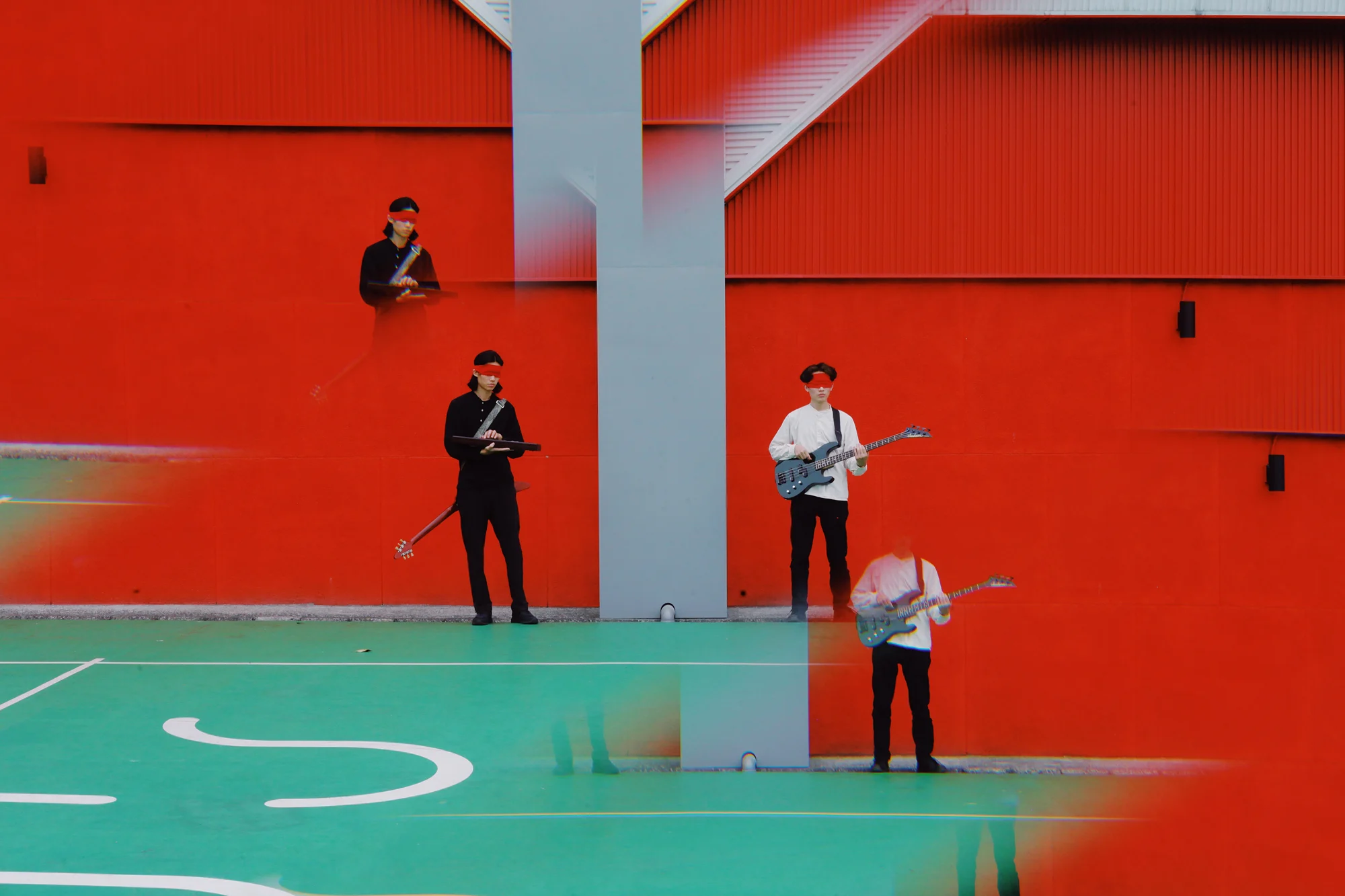
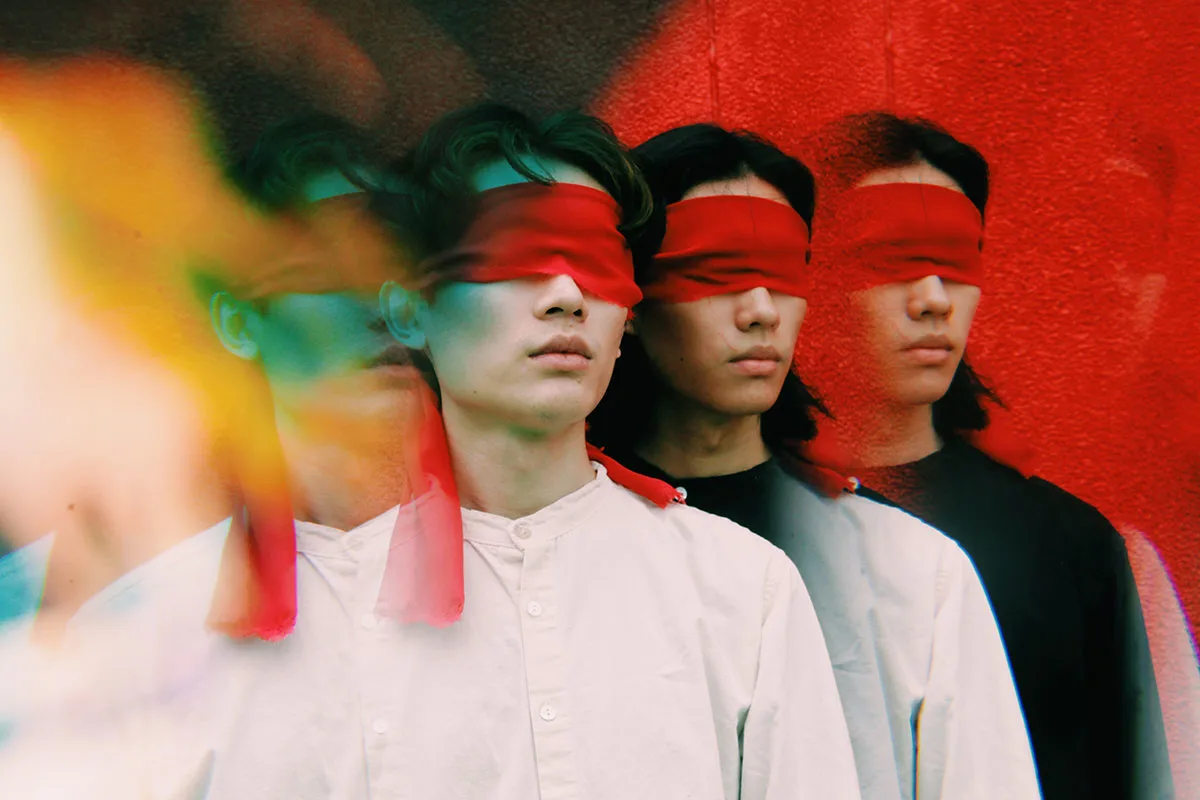
Mong Tong is a sample-based band in Taipei. With a sound evocative of the mysterious, tropical “ghost island” of Taiwan, Mong Tong playfully draws on kitsch aesthetics of the supernatural and New Age beliefs popular in the ‘90s and ‘00s. Publicly represented by two brothers, Hom Yu and Jiun Chi, Mong Tong is more than just a band, also producing their own MVs, designing their own album covers, and hoping to present their music in unconventional forms. Writer Brian Hioe sat down with the band in a Taipei coffee shop to discuss how they understand their work and what they hope to do in the future.
Photos by Manbo Key
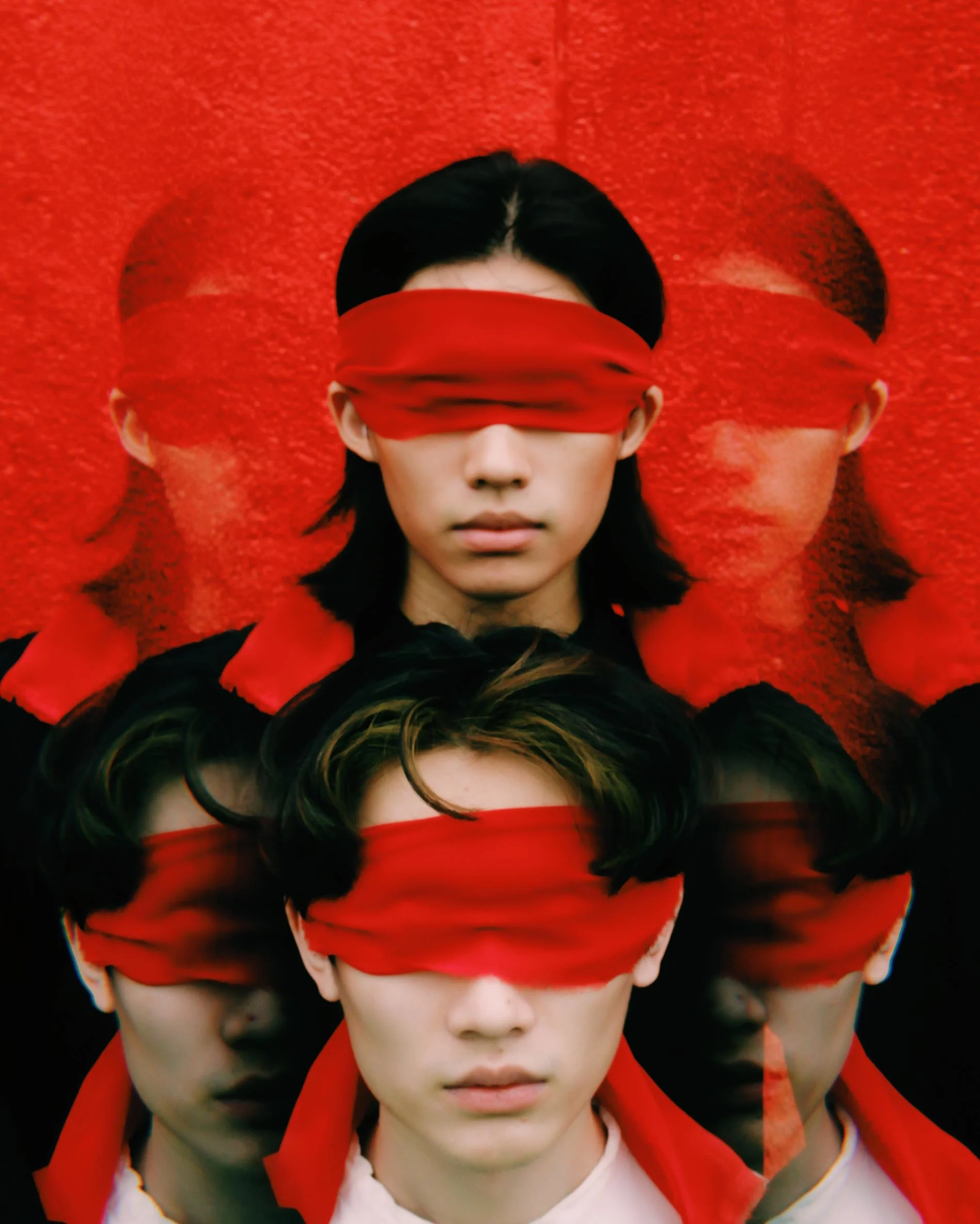
Not quite a band, not quite entirely electronic music either, Mong Tong proves hard to place.
The first time I saw Mong Tong play was, as it happened, at a show that I organized. The venue was a place called 4am Station, located in a former movie theater that was subsequently changed into a venue that also housed a recording studio and a campaign office for a youth-oriented activist third party. It’s the kind of unusual place you’d expect to see Mong Tong play at.
“Give me a speaker and we can play anywhere,” says Hom Yu, who along with his brother Jiun Chi, are the two public faces of the band during performances. According to the duo, there’s a third member as well, but he or she doesn’t make public appearances. All I’ve found out about this mysterious third member is that he or she seems to be called “Tong.”
The band’s latest aim is to play in more unconventional places. “No live houses,” says Jiun Chi. Instead, they would like to play at places like bookstores, record shops, galleries, or outdoors, in venues that don’t require listeners to pay a price for admission. One of the places where Mong Tong frequently plays is a small gallery, Waiting Room, with one of their EP releases titled Waiting Room’s Theme and Remix. They were slated to play at Organik, the electronic music festival that takes place annually in Hualien on Taiwan’s eastern coast, before it was canceled due to restrictions on mass gatherings because of COVID-19.
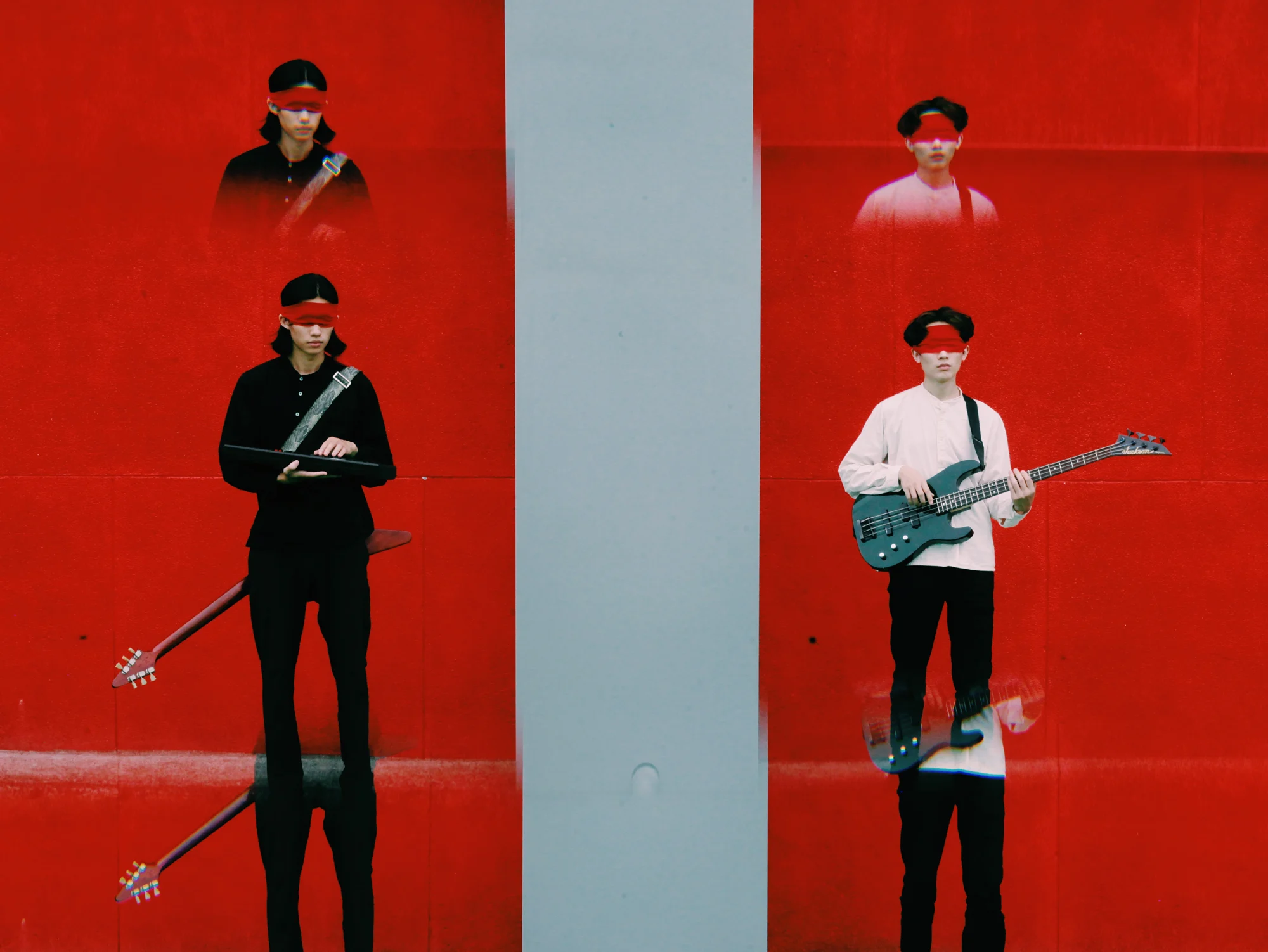
There’s a growing experimental scene in Taipei these days. Mong Tong is certainly a part of that. But not quite a band, not quite entirely electronic music either, Mong Tong proves hard to place. As Jiun Chi comments, with Mong Tong, they were attempting to do something, “Sort of like DJing, but with a band.” Hom Yu says that they were “Trying to get out of the band format” and that they wanted to be “sort of electronic and sort of rock.”
While other bands feature a singer or a drummer, Mong Tong performances feature Hom Yu and Jiun Chi playing the guitar, bass, keyboard, and operating Ableton just between the two of them, striving for a sample-based analog sound not reliant on 808 synthesizers or traditional drum samples.

Both brothers attribute Mong Tong’s musical direction to having played in numerous four-piece bands in the past, in genres ranging from dream pop to heavy metal, and hoping for alternative arrangements. So, too, with their desire to play in non-traditional venues. There being only so many music venues in Taiwan, both have played most of the venues that currently exist and are hoping to play in new spaces.
Mong Tong credits their stripped-down set-up and heavy use of sampling with giving them versatility, not only allowing them to draw on a wide range of sound, but making it easy to play in unconventional locations and to tour, since expenses are at a minimum. Hom Yu comments that their music is suitable for “accompaniment” rather than being the “main character” of a setting, like a big band playing in the background of people dancing in a bar or the Taiwanese working-class musical genre, nakasi.
What jumps out about Mong Tong is not just their music, but the uniqueness of their aesthetic, with references to “Ancient Mars,” “Chakra,” and frequent New Age imagery in their MVs and album covers.
Talking with the brothers, I comment that a lot of it seems very Taiwanese to me, particularly reminding me of when we were kids in the late ‘90s and early ‘00s, when New Age thought seemed to reach its apex of popularity in Taiwan. There were all sorts of strange New Age cure-alls being sold in night markets and on grainy late-night television shopping networks back then. That was also when a number of urban myths became widespread in Taiwan, spread by many ghost and horror-themed television shows and movies.
We wanted to promote a theme when we began Mong Tong so we decided to use conspiracy theories or myths.
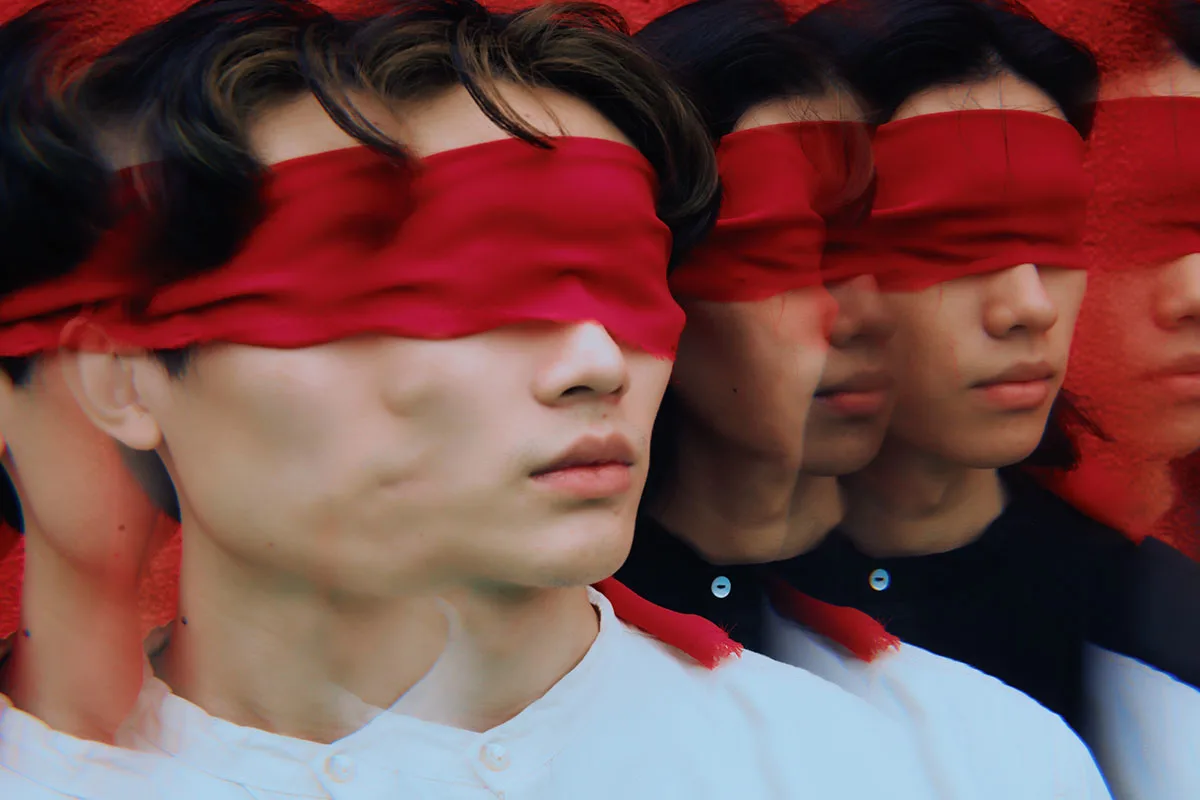
“We wanted to promote a theme when we began Mong Tong,” says Hom Yu. “So we decided to use conspiracy theories or myths. Later on, we discovered that Taiwan had many such things in the past 20 years. It creates a sense of a different world. But we felt that nobody had tried to develop this before into a form of art, so we wanted to try that.”
The band’s name reflects this sense of mystery. “Mong Tong” can be read in Chinese as “Eastern Dream” (夢東), but usually appears more often in English with no set Chinese meaning. Hom Yu says that there’s a city in Myanmar called Mong Tong, but that the name also sounds like it could be a place in Hong Kong, the name having something of a Cantonese-flavor to it. Hom Yu also says that some have interpreted Mong Tong as meaning “Dream Child” (夢童) or having to do with the word “hormone” (荷爾蒙) in Chinese.
The band designs their album covers and makes their MVs themselves. Jiun Chi says, “When we have a sense of what direction we want an album to go in, we start to design the album cover. So there are usually many different versions of the cover. From the first version to the last version, it’s usually more than six months. We put some small secrets on the covers of our albums.”

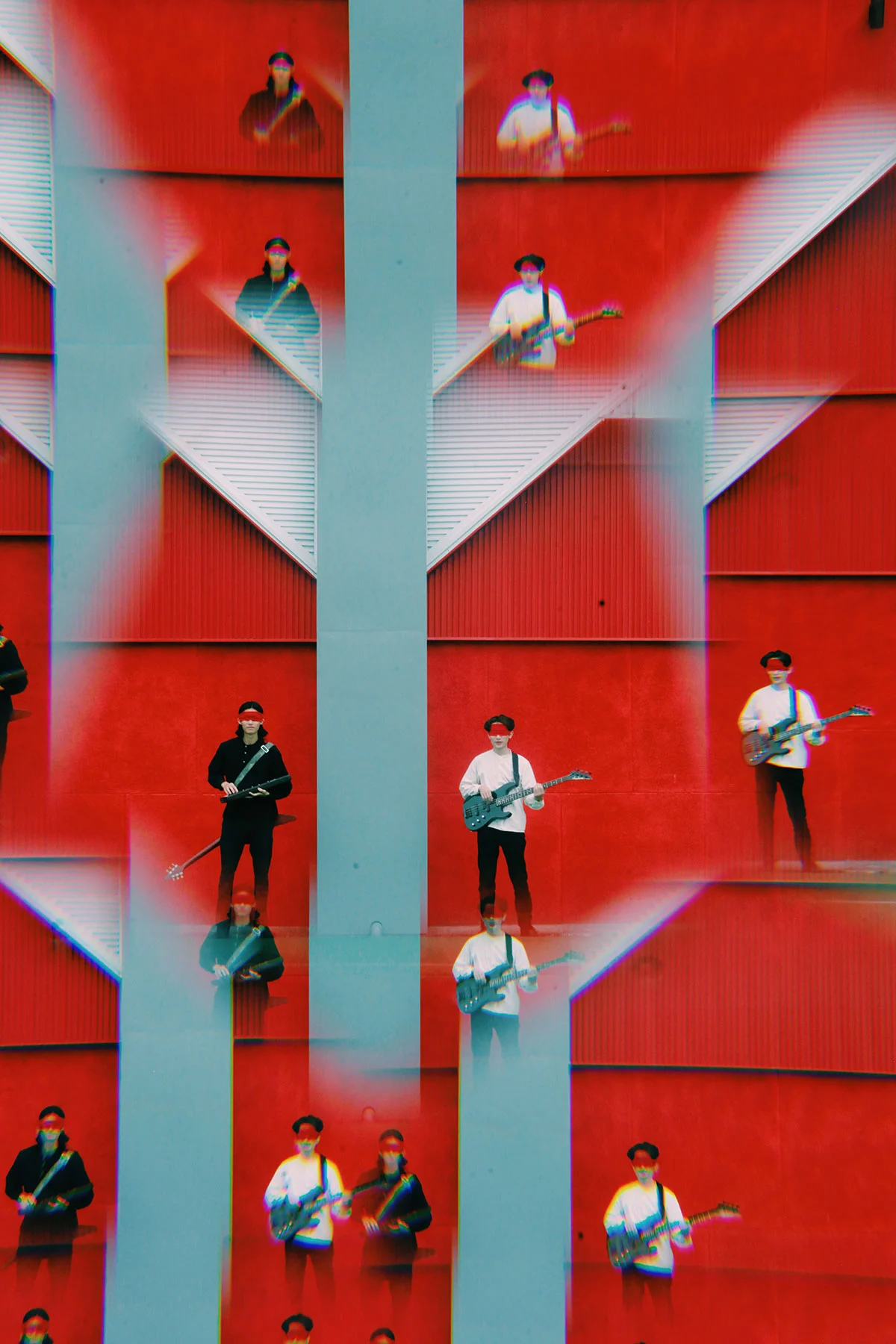
According to Mong Tong, the desire to try out interdisciplinary projects stemmed from feeling that music had become too easy. So, according to Hom Yu, this led the band to spend more time on design. He compares experimenting with design to experimenting with music and free improvising.
This is reflected in the MVs that the band has made, as well as the design of their album covers. One of their EP releases last year, Taiwan Mystery, even included a self-designed zine. The zine was primarily composed of pictures of interesting temples that Jiun Chi saw while taking a road trip around the coast of Taiwan with his girlfriend by scooter, a rite in Taiwan referred to as huandao (環島), literally “circling the island.”
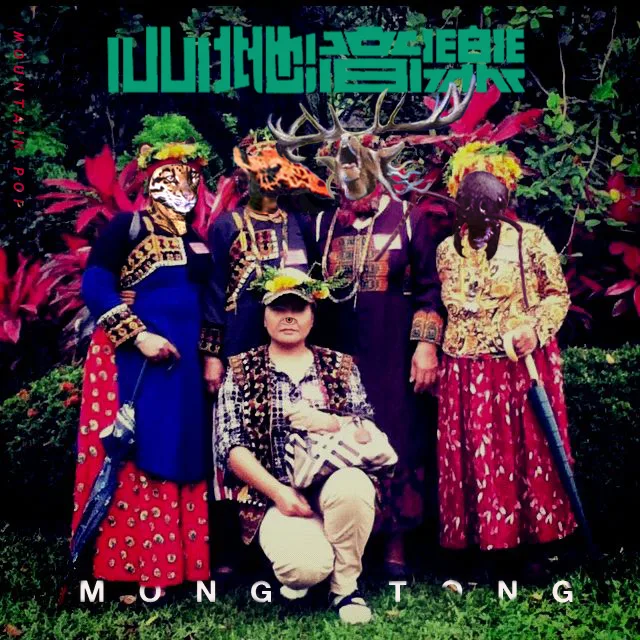

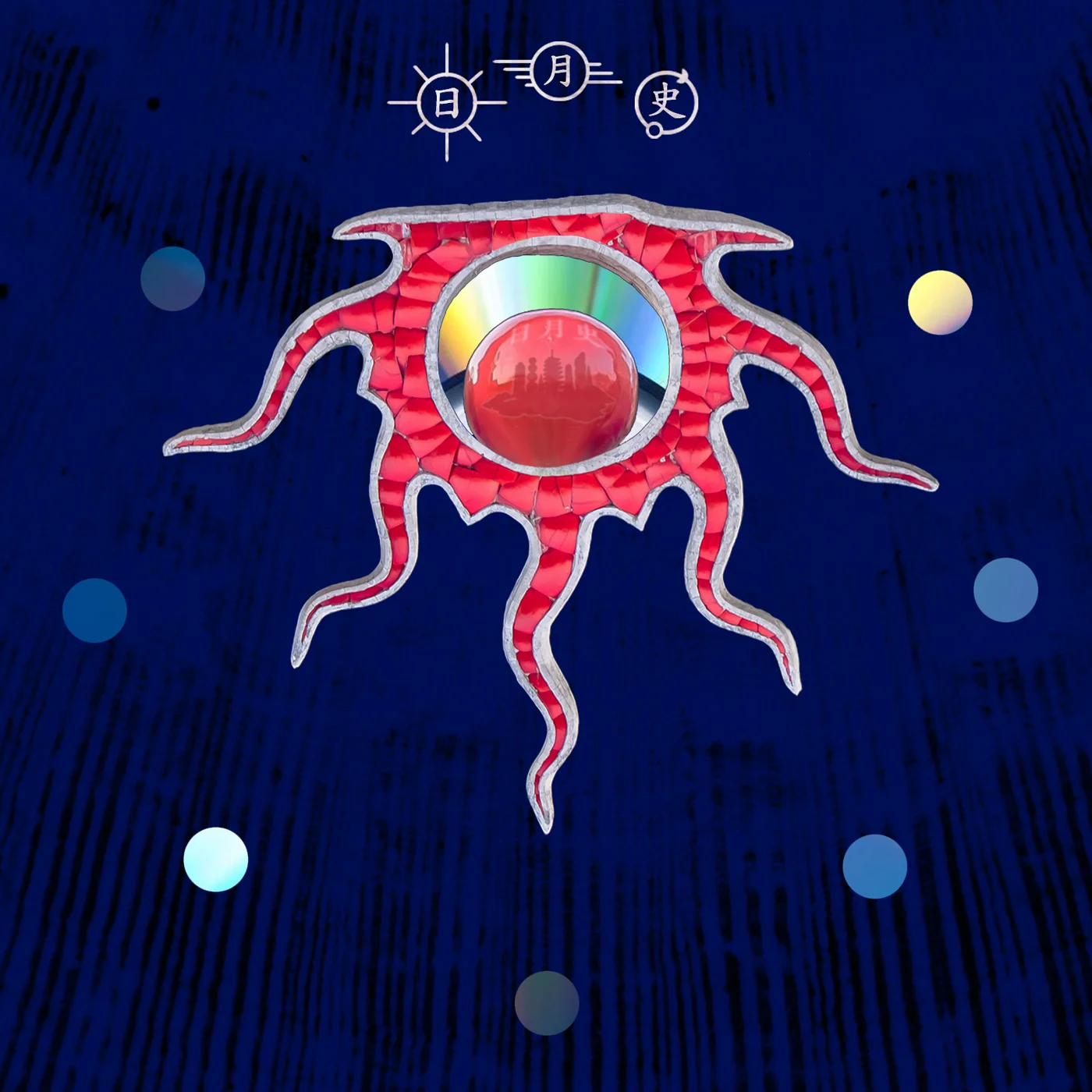

Future plans include a second instalment of this zine as well as releasing albums in alternative formats, such as in the form of a potted plant with a QR code attached to the bottom, or even making a video game, building on previous MVs that the band made themselves using Sketchup and playing around with perspective to create the appearance of CGI motion.
Perhaps this reflects broader tendencies in the Taipei scene. “The audience is more and more picky,” says Jiun Chi. “Things are very inter-disciplinary now, because there are more and more activities and people are getting more and more experienced,” says Hom Yu. “It’s more competitive now and people want to see interesting ways of combining things.”
That generally seems to be the case. I had gotten to know Mong Tong in the years since the show we did together, encountering them at shows and events. Many were shows organized by Future Proof, an experimental record label, or Batonic Projects, which frequently paired zine releases with noise performances. Or I would see them at events at outdoor venues, such as Tiger Mountain, a former temple that was converted into a venue, or Final, a Taipei nightclub whose owners had previously organized the Rebels of the Neon God club nights, referencing Tsai Ming-liang’s iconic 1992 Taiwanese New Wave film. These took place at Korner, the nightclub alter ego of The Wall, the major indie rock venue in Taipei; though The Wall still exists, Korner is now only a thing of legend.
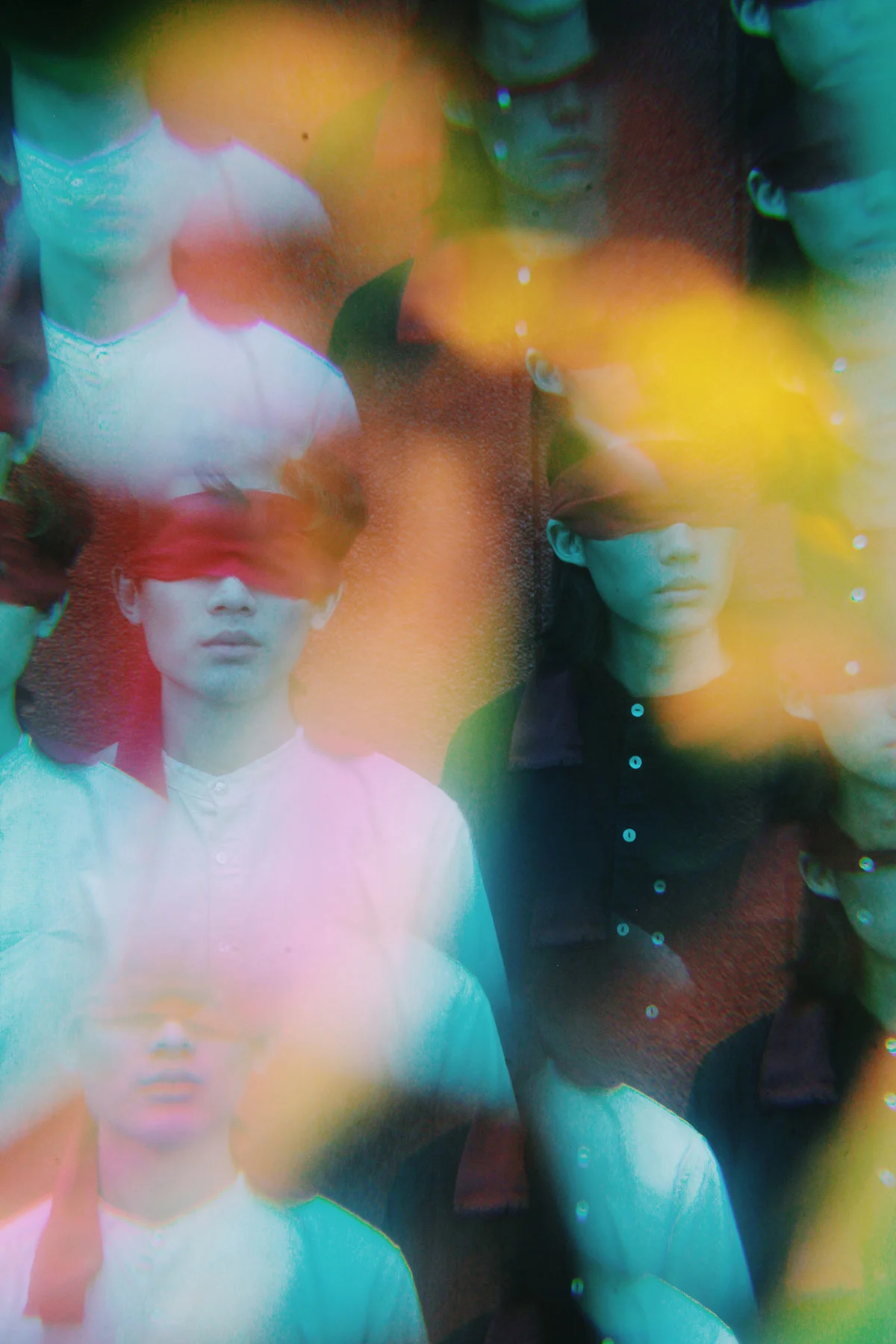
Bands such as Prairie WWWW, which Hom Yu also plays in, and Forests similarly combine a traditional band set up with heavy use of electronics, sometimes playing alongside electronic music acts and DJs. They also stand out for their similarly well-developed aesthetic. There’s a sort of technological invocation of nature between all three acts, with Prairie WWWW invoking a sort of tribal futurist aesthetic, and Forests having shifted abruptly from indie rock toward a techno-influenced dark electronic sound with organic rhythmic undertones in past years.
Mong Tong differentiates itself from these groups through not fitting into the traditional band format, with its lack of a drummer and vocalist. By contrast, the compositions of both Prairie WWWW and Forests, which are both represented by the Lonely God label and play at many of the same spaces as Mong Tong, are heavily centered around vocals and drums.
Compared to bands with similar sounds, Mong Tong’s aesthetic is much more citational, in deliberately using old movies, soundtracks, or soundbites in its albums and MVs. Consequently, Mong Tong rather take on overtly avant-garde stylings, Mong Tong prefers mining kitsch for creative content. Other, more mainstream independent acts, such as singer-songwriter 9m88 or Bisiugroup have had similarly referential MVs, drawing upon the aesthetics of old films from Hong Kong or Japan or Taiwan’s own homegrown variety of kitsch, as in the tradition of “color stage” shows seen in the countryside.
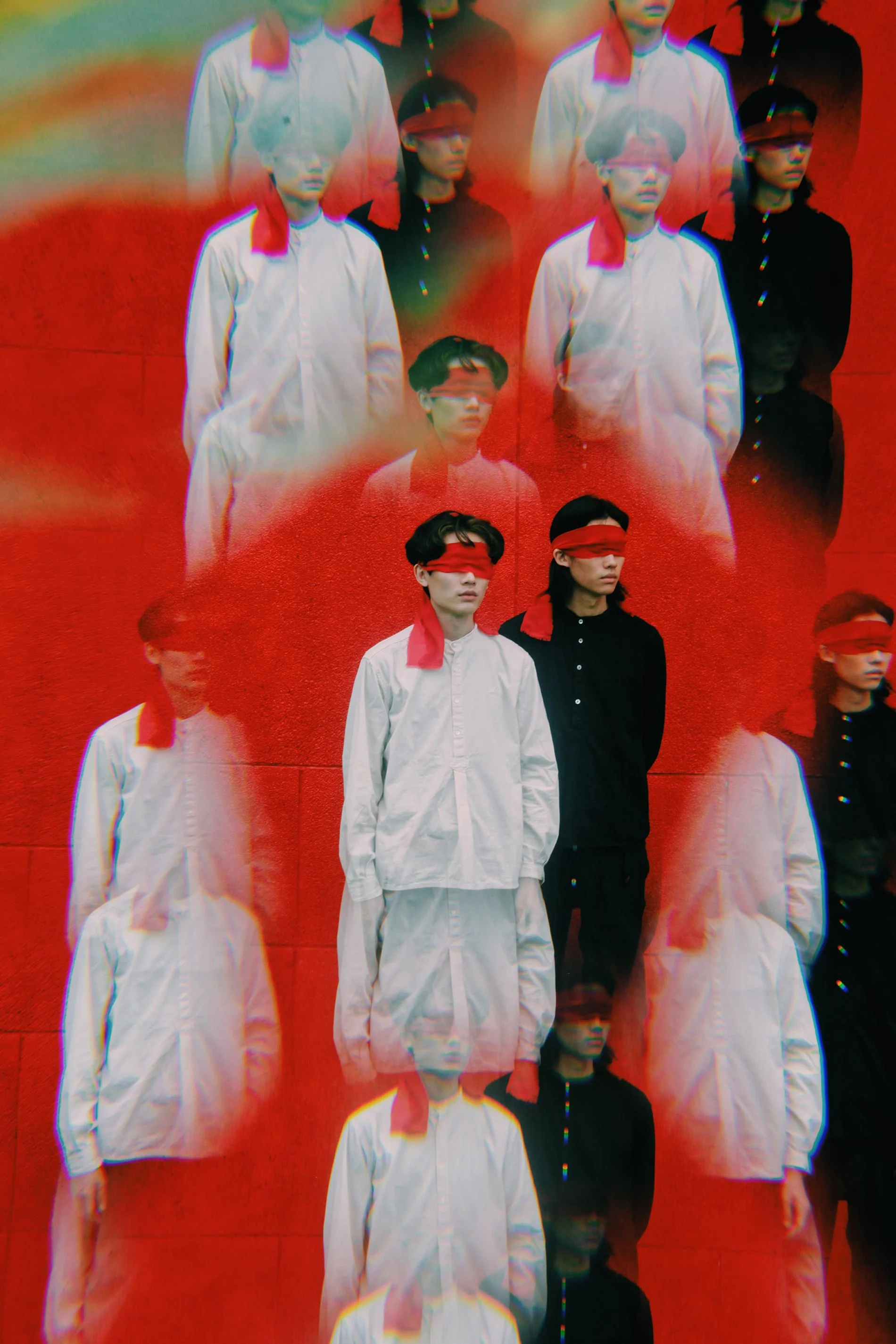
There being only so many music venues in Taiwan, they’ve played most of the venues that currently exist.
In combining a number of different tendencies, Mong Tong can be seen as representative of larger trends in the bleeding edge of the Taiwanese music scene, then, while also distinctive in their own right. But it could be that Mong Tong’s in-betweenness is precisely what makes them so distinctive.
“I feel that Mong Tong’s music is somewhere in between. It won’t emphasize something. It’s not very electronic or very rock,” says Hom Yu. “It’s very similar to Taiwan’s international status,” says Jiun Chi, referencing Taiwan’s lack of recognition as a country by the majority of the members of the international community. “It’s very unclear.”
